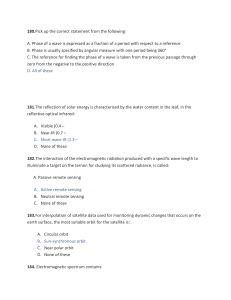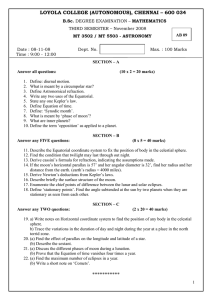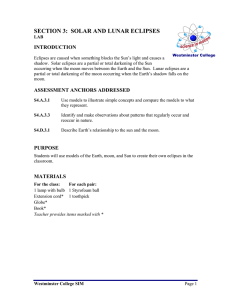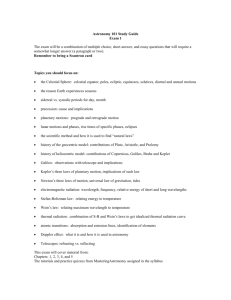Astronomy 101 Test #1 Review Questions
advertisement
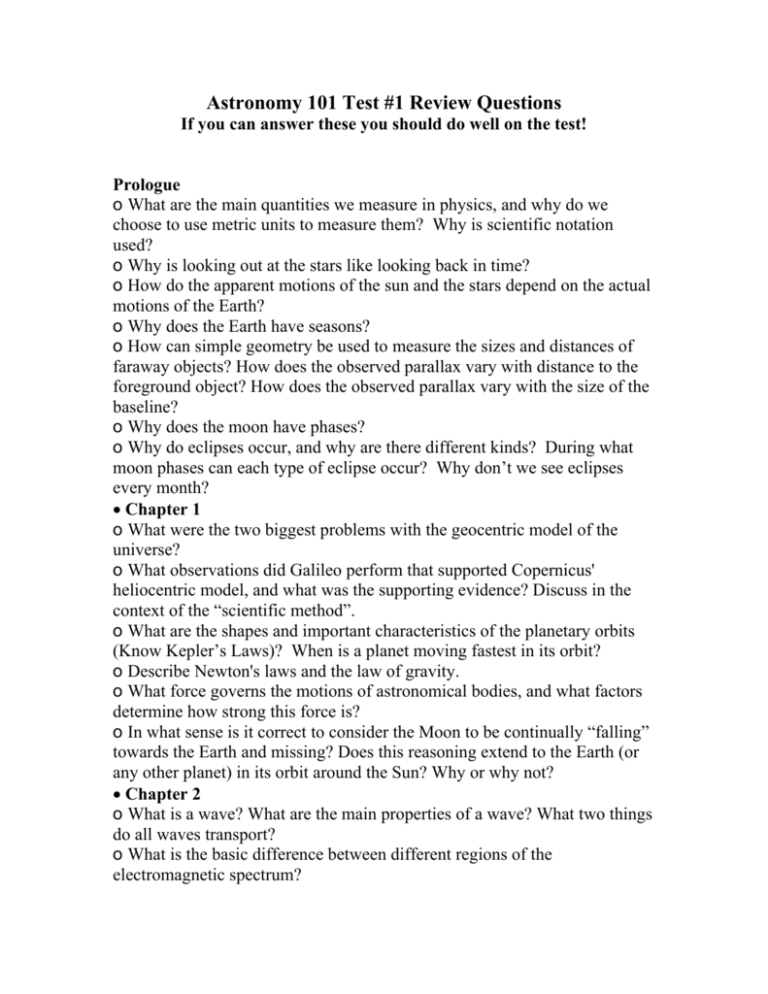
Astronomy 101 Test #1 Review Questions If you can answer these you should do well on the test! Prologue o What are the main quantities we measure in physics, and why do we choose to use metric units to measure them? Why is scientific notation used? o Why is looking out at the stars like looking back in time? o How do the apparent motions of the sun and the stars depend on the actual motions of the Earth? o Why does the Earth have seasons? o How can simple geometry be used to measure the sizes and distances of faraway objects? How does the observed parallax vary with distance to the foreground object? How does the observed parallax vary with the size of the baseline? o Why does the moon have phases? o Why do eclipses occur, and why are there different kinds? During what moon phases can each type of eclipse occur? Why don’t we see eclipses every month? • Chapter 1 o What were the two biggest problems with the geocentric model of the universe? o What observations did Galileo perform that supported Copernicus' heliocentric model, and what was the supporting evidence? Discuss in the context of the “scientific method”. o What are the shapes and important characteristics of the planetary orbits (Know Kepler’s Laws)? When is a planet moving fastest in its orbit? o Describe Newton's laws and the law of gravity. o What force governs the motions of astronomical bodies, and what factors determine how strong this force is? o In what sense is it correct to consider the Moon to be continually “falling” towards the Earth and missing? Does this reasoning extend to the Earth (or any other planet) in its orbit around the Sun? Why or why not? • Chapter 2 o What is a wave? What are the main properties of a wave? What two things do all waves transport? o What is the basic difference between different regions of the electromagnetic spectrum? o What are the important characteristics and laws associated with objects that have a black-body spectrum? o Describe the basic structure of the hydrogen atom. o Explain how absorption and emission lines are produced and discuss their dependence on atomic structure. o What are photons? What role do they play in absorption/emission? What two things do they transport? How are they related to electromagnetic waves? o Why is spectroscopy a useful tool in astronomy? o How and why does the observed frequency and wavelength of a wave change when the source of the wave moves towards or away from you? How about when you are moving towards or away from the source? What about motion perpendicular to the line-of-sight?

